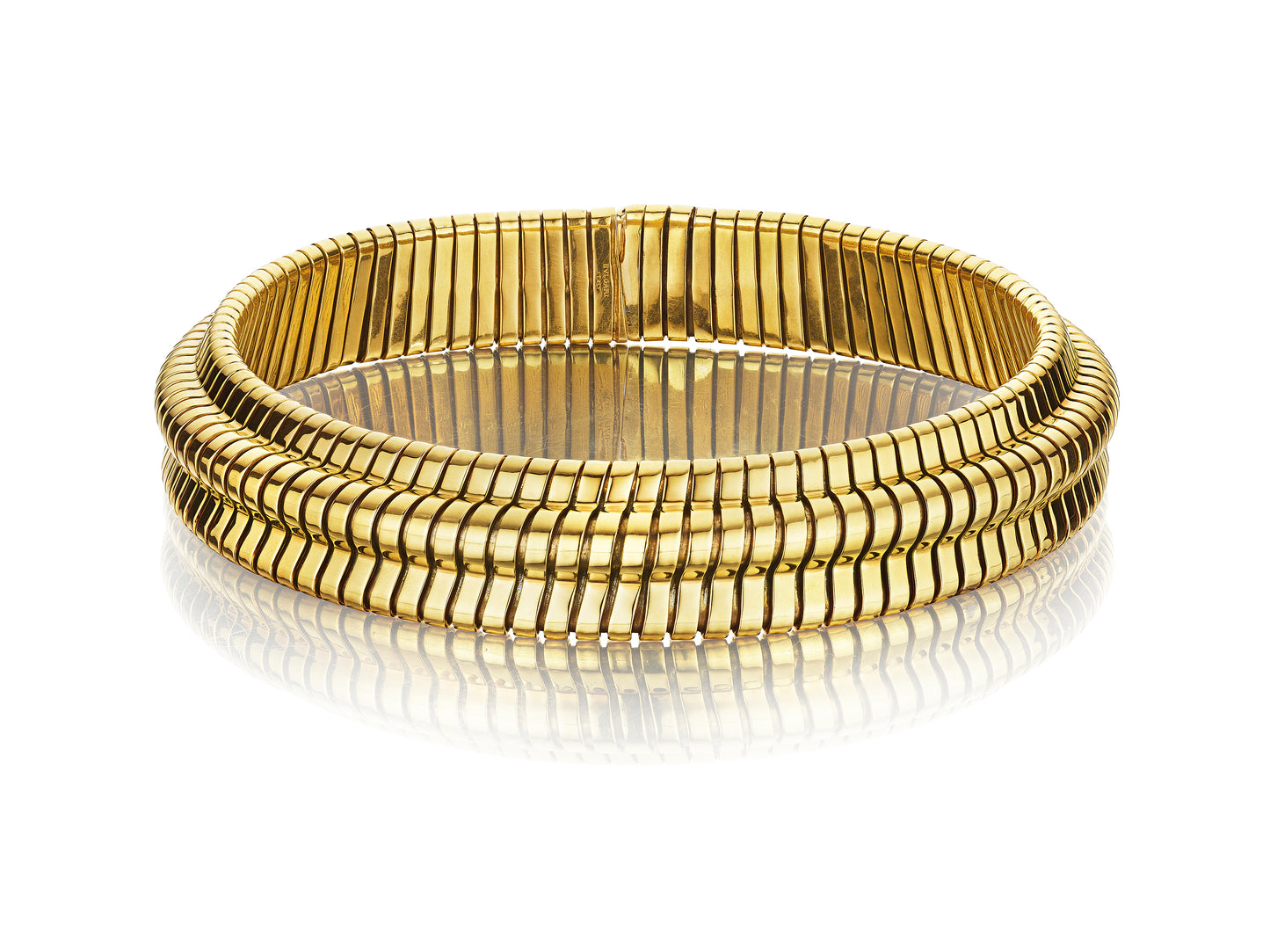“Tubogas” Choker Necklace by Bulgari, Rome, circa 1970
“Tubogas” Choker Necklace by Bulgari, Rome, circa 1970
Sold
A flexible necklace of Tubogas “gas pipe” construction, designed to look like three stacked necklaces: in 18-karat gold around a steel core, with Italian assay marks
- Signed Bulgari, with control mark 1932 AL for Roberto Legnazzi
- Measurements: 16 ½ x 1 inches
Additional cataloguing
Biography
Sotirios Bulgari established the jewelry house of Bulgari in Greece in the late nineteenth century, originally creating precious objects in silver. In 1881, he relocated to Rome and, three years later, opened his first store. By the first decade of the twentieth century, jewelry had been added to his stock. His drive and ambition were passed on to his sons and grandsons who continued to offer well designed and superbly made jewelry to their clientele. Today, Bulgari is an international luxury brand.
Significance
In the late 1930s and 1940s, as World War II gripped the world, artists and jewelers, still compelled to create, looked for new ways of making to express the seriousness of world events. They turned away from flamboyant, colorful or gem-encrusted pieces in favor of sleek, stripped-down designs inspired by the modern world. A new style of chain emerged in this period that was instantly favored by the finest jewelry houses including Cartier, Van Cleef & Arpels, and Bulgari.
The Tubogas takes its design from a machine part, the flexible gas hose, and is created by overlapping bands of gold to create a supple and wonderful piece that is beautiful and easy to wear. The rounded contours of the bands interlock to completely conceal the inner steel structure and to create a sense of flexibility that gives a wonderful custom fit to each wearer. Entirely handmade, the Tubogas requires great skill and attention to detail as it is assembled to fit together perfectly, without solder. Bulgari created their first example in the late 1940s, and at the outset they were made for Serpenti pieces, with snake heads.
In the 1970s, Bulgari continued to use the Tubogas design for their iconic Serpenti and Monete designs (incorporating ancient coins). But they also created wonderful and wearable gas-pipe chain necklaces, bracelets and rings that stood on their own. This necklace is a wonderful and elaborate variation made to look like it is a triple-chain, but the inside reveals a single, comfortable piece. The vintage pieces are rare and desirable. This flexible Tubogas, inspired by the beauty of an industrial part, is an iconic and important design for any collection.









